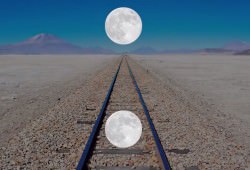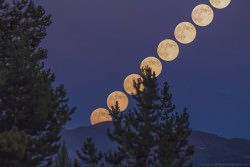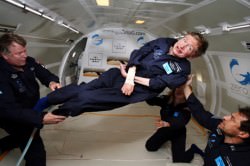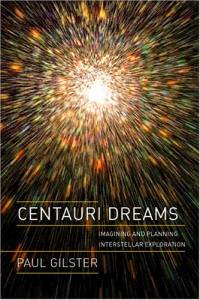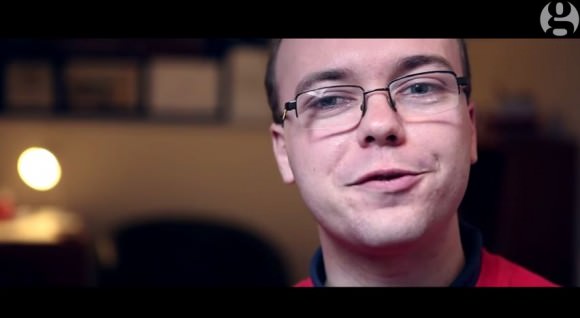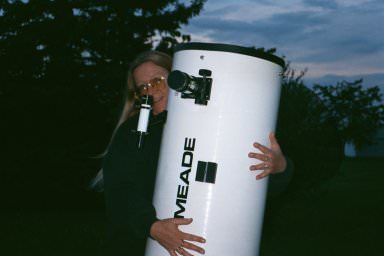If you’ve read your share of sci-fi, and I know you have, you’ve read stories about another Earth-sized planet orbiting on the other side of the Solar System, blocked by the Sun. Could it really be there?
No. Nooooo. No. Just no.
This is a delightful staple in science fiction. There’s a mysterious world that orbits the Sun exactly the same distance as Earth, but it’s directly across the Solar System from us; always hidden by the Sun. Little do we realize they know we’re here, and right now they’re marshalling their attack fleet to invade our planet. We need to invade counter-Earth before they attack us and steal our water, eat all our cheese or kidnap our beloved Nigella Lawson and Alton Brown to rule as their culinary queen and king of Other-Earth.
Well, could this happen? Could there be another planet in a stable orbit, hiding behind the Sun? The answer, as you probably suspect, is NO. No. Nooooo. Just no.
Well, that’s not completely true. If some powerful and mysterious flying spaghetti being magically created another planet and threw it into orbit, it would briefly be hidden from our view because of the Sun. But we don’t exist in a Solar System with just the Sun and the Earth. There are those other planets orbiting the Sun as well. As the Earth orbits the Sun, it’s subtly influenced by those other planets, speeding up or slowing down in its orbit.
So, while we’re being pulled a little forwards in our orbit by Jupiter, that other planet would be on the opposite side of the Sun. And so, we’d speed up a little and catch sight of it around the Sun. Over the years, these various motions would escalate, and that other planet would be seen more and more in the sky as we catch up to it in orbit.
Eventually, our orbits would intersect, and there’d be an encounter. If we were lucky, the planets would miss each other, and be kicked into new, safer, more stable orbits around the Sun. And if we were unlucky, they’d collide with each other, forming a new super-sized Earth, killing everything on both planets, obviously.
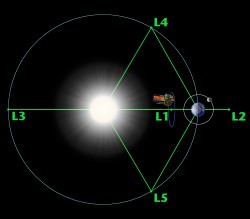
What if there was originally two half-Earths and they collided and that’s how we got current Earth! Or 4 quarter Earths, each with their own population? And then BAM. One big Earth. Or maybe 64 64th Earths all transforming and converging to form VOLTREARTH.
Now, I’m now going to make things worse, and feed your imagination a little with some actual science. There are a few places where objects can share a stable orbit. These locations are known as Lagrange points, regions where the gravity of two objects create a stable location for a third object. The best of these are known as the L4 and L5 Lagrangian points. L4 is about 60-degrees ahead of a planet in its orbit, and L5 is about 60-degrees behind a planet in its orbit.
A small enough body, relative to the planet, could hang out in a stable location for billions of years. Jupiter has a collection of Trojan asteroids at its L4 and L5 points of its orbit, always holding at a stable distance from the planet. Which means, if you had a massive enough gas giant, you could have a less massive terrestrial world in a stable orbit 60-degrees away from the planet.

Well, it was a pretty clever idea. Unfortunately, the forces of gravity conspire to make this hidden planet idea completely impossible. Most importantly, when someone tells you there’s a hidden planet on the other side of the Sun, just remember these words:
No.
Nooooo.
No.
Go ahead and name your favorite sci-fi stories that have used this trope. Tell us in the comments below.
Thanks for watching! Never miss an episode by clicking subscribe. Our Patreon community is the reason these shows happen. We’d like to thank Gary Golden and the rest of the members who support us in making great space and astronomy content. Members get advance access to episodes, extras, contests, and other shenanigans with Jay, myself and the rest of the team.
Want to get in on the action? Click here.



